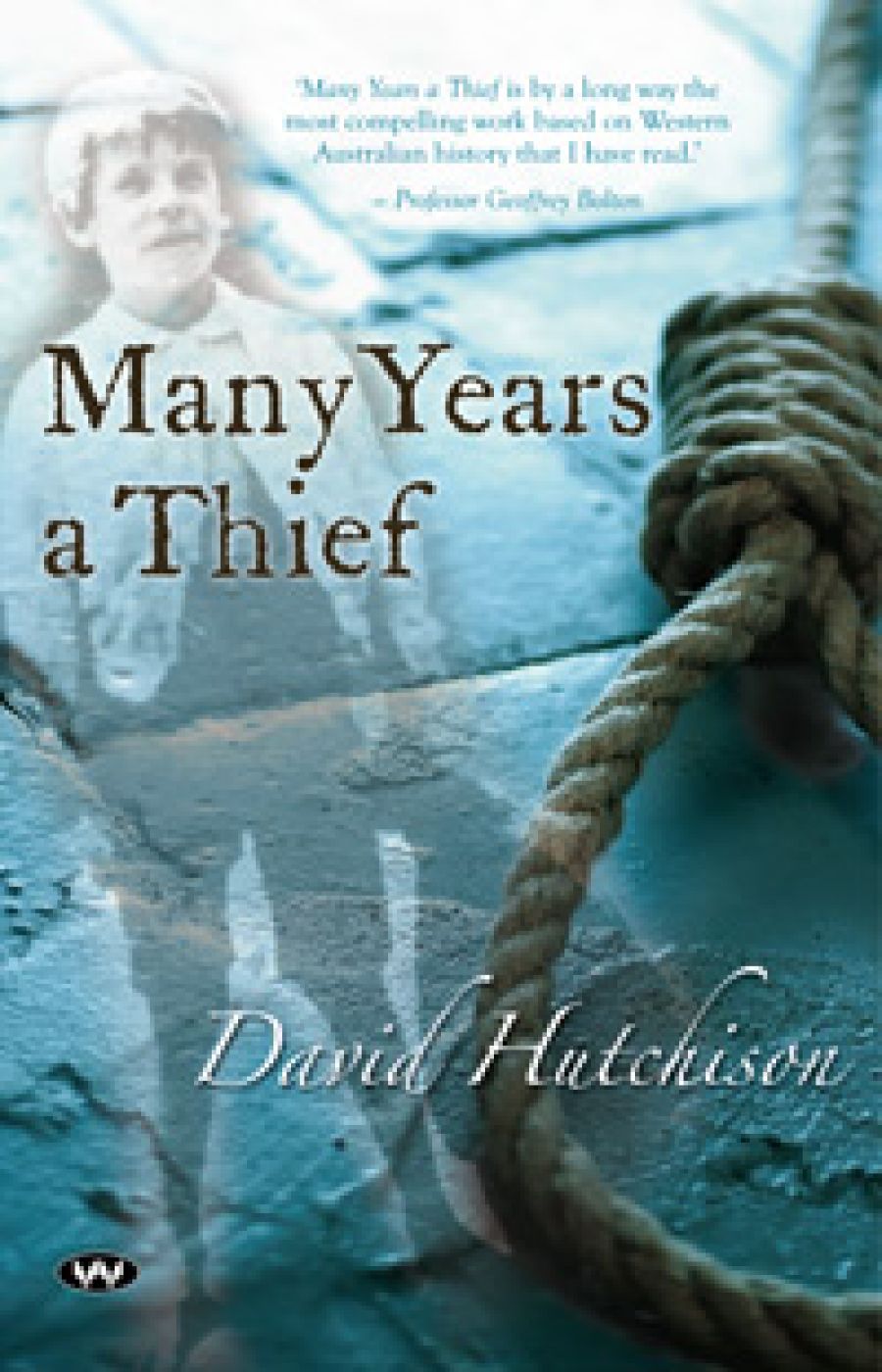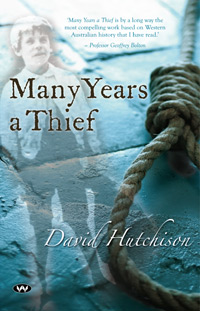
- Free Article: No
- Contents Category: Fiction
- Review Article: Yes
- Article Title: Many Years a Thief
- Online Only: No
- Custom Highlight Text: The first of Western Australia’s 9,000 or so adult convicts were not transported there until 1850, but 234 boys from the Parkhurst Reformatory, on the Isle of White, had been sent to the colony in the 1840s. Classified as ‘Government Juvenile Immigrants’, they became apprentice settlers. Among them was fifteen-year-old John Gavin, the first European to be executed in Western Australia. David Hutchison’s novel Many Years a Thief evokes the crime from the perspective of the fair-minded government guardian to the boys, John Schoales, who, wracked by guilt, begins an investigation that will, in turn, bring about his ruin.
- Book 1 Title: Many Years a Thief
- Book 1 Biblio: Wakefield Press, $22.95 pb, 179 pp
- Book 1 Cover Small (400 x 600):

- Book 1 Cover (800 x 1200):

This ambitious novel is laudable for highlighting the appalling conditions in which the boys were trans-ported, and for recreating that terrifying edifice, Round House Prison, with its ‘glare from the limestone’ and its ‘stench from the whalers’ trypots on the beach’. Many Years a Thief might have been even more persuasive as non-fiction: it lacks a certain historical actuality and strains against basic novelistic conventions. At times the dialogue is clunky, without bite; descriptions of social niceties – cups of tea and whisky in the drawing room – stultify a plot already blighted with exhaustive scenes in which Schoales strides from one place to another. Secondary characters, women especially, are tedious: Schoales’s sister, Elizabeth, ostensibly there only to worry about her brother’s health and to lament his lack of a wife, is fond of the irritating exclamation ‘John, that’s blasphemous’ at the mild-est provocation.
Buried within the story is its intriguing conduit, John Gavin; he is muted by the endless detail. In what is a vibrant and sometimes contentious period of historical reimaginings in Australian literature, it is a shame that this chapter in Western Australian history, unfamiliar to many, does not grip the reader.


Comments powered by CComment